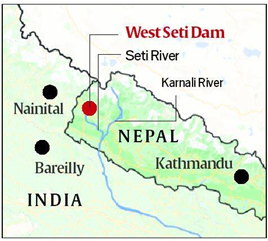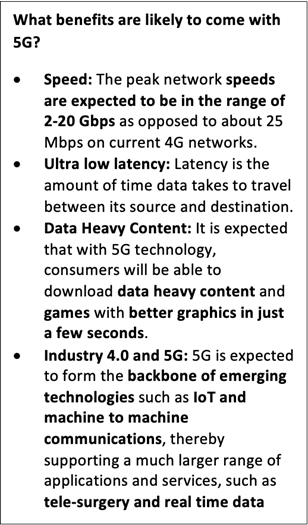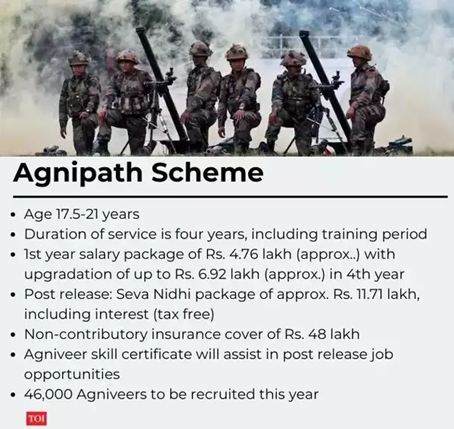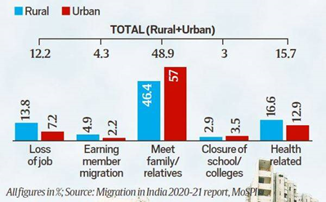Wednesday, 22nd June 2022
12th Ministerial Conference of the WTO
In News
The recently held 12th Ministerial Conference of the WTO agreed to a series of deals.
About the News
- The WTO's 12th Ministerial Conference (MC12) took place from 12 to 17 June 2022 at WTO headquarters in Geneva.
- The Conference was co-hosted by Kazakhstan.
- MC12 was originally scheduled to take place in June 2020 in Nur-Sultan, Kazakhstan, but was postponed due to the COVID-19 pandemic.
What were the main outcomes of the MC12?
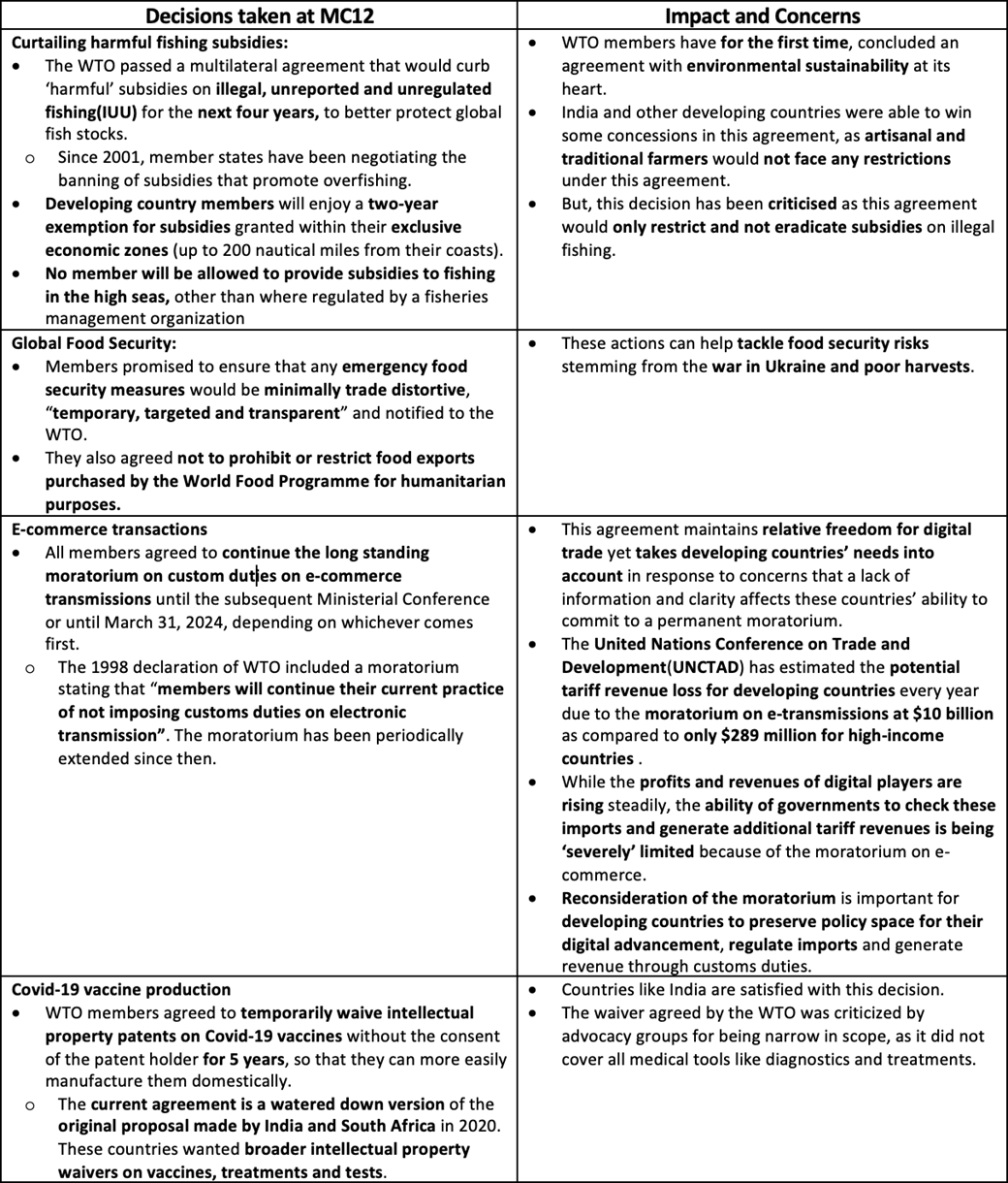
What is the WTO and the Ministerial Conference?
- Founded in 1995, the WTO is run by its 164 members, and according to its rules, all decisions are taken through consensus and any member can exercise a veto.
- The World Trade Organization is the only international organization that deals with the rules of trade between countries.
- Its aim is to promote free trade, which is done through trade agreements that are discussed and signed by the member states.
- The WTO also provides a forum for countries to negotiate trade rules and settle economic disputes between them.
- The Ministerial Conference is the WTO’s top decision-making body and usually meets every two years.
- All members of the WTO are involved in the MC and they can take decisions on all matters covered under any multilateral trade agreements.
Sources:
Single-use Plastic Ban in India
In News
The Central government has banned the use of ‘single-use plastic’ from July 1, 2022.
About the News
- As per the notification, the manufacture, import, stocking, distribution, sale and use of single-use plastic including polystyrene and expanded polystyrene commodities will stand banned from July 2022.
- The items that will banned include earbuds; balloon sticks; candy and ice-cream sticks; cutlery items including plates, cups, etc.; invitation cards; cigarette packs; PVC banners measuring under 100 microns; and polystyrene for decoration.
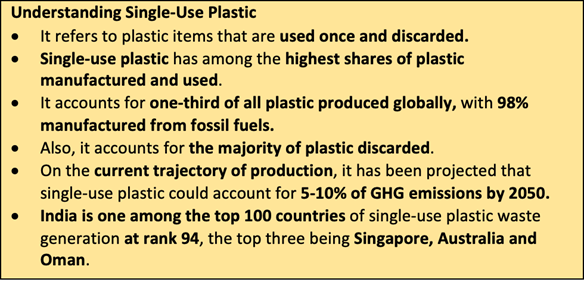
- Polythene bags under 75 microns, sachets using plastic material for storing, packing or selling gutkha, tobacco and pan masala.
- The items chosen are of low value and of low turnover and are unlikely to have a big economic impact.
Why these items?
- The choice of items for the ban was based on the difficulty of collection, and recycling.
- When plastic remainsin the environment for long periods of time and does not decay, it turns into microplastics, first entering our food sources and then the human body, which is extremely harmful.
- The largest share of single-use plastic is that of packaging with as much as95% of single use belonging to this category from toothpaste to shaving cream to frozen foods.
Enforcement of the ban
- The ban will be monitoredby the CPCB from the Centre, and by the State Pollution Control Boards (SPCBs) that will report to the Centre regularly.
- Local authoritieshave been directed to issue fresh commercial licenses with the condition that SUP items will not be sold on their premises, and existing commercial licences will be cancelled if they are found to be selling these items.
- Violation of the ban will be penalised under the Environment Protection Act 1986 which allows for imprisonment up to 5 years, or a penalty up to Rs 1 lakh, or both.
Global ways of dealing with single-use plastic
- In 2022, 124 countries, parties to the United Nations Environment Assembly, including India, have signed a legally binding resolution to address the full life of plastics from production to disposal, to end plastic pollution.
- As of July 2019, 68 countries have plastic bag bans with varying degrees of enforcement.
- For instance,
- Bangladesh: It became thefirst country to ban thin plastic bags in 2002.
- New Zealand: It became the latest country to ban plastic bags in July 2019.
- China: It issued a ban on plastic bags in 2020 with phased implementation.
- The US: Eight states in the US have banned single-use plastic bags, starting with California in 2014. Seattle became the first major US city to ban plastic straws in 2018.
- European Union: In 2021, the Directive on Single-Use Plasticstook effect in the European Union (EU) that bans certain single-use plastics for which alternatives are available.
Source:
- Explained: Why is single-use plastic being banned in India from July 1?
- India to ban single-use plastic: Why is it is so hazardous? Which countries have taken steps to get rid of it?
Image source:
Global Biodiversity Framework - Edukemy Current Affairs
In News
The draft of the Post 2020 Global Biodiversity Framework has been criticised for failing to account for the totality of chemical pollutants that threaten ecosystems globally.
Post 2020 Global Biodiversity Framework
- It is a new framework that will guide actions worldwide through 2030, to preserve and protect nature and its essential services to people.
- It aims to contribute to the objectives of the Convention on Biological Diversity and other biodiversity related multilateral agreements, processes and instruments.
- The framework has been built around a theory of change which recognizes that urgent policy action globally, regionally and nationallyis required to transform economic, social and financial models.
- The Framework has four important goals to achieve by 2050 which include:
- To halt the extinction and declineof biodiversity.
- Toenhance and retain nature’s services to humans by conserving.
- To ensure fair and equitable benefitsto all from use of genetic resources.
- To close the gap between available financial and other means of implementationand those necessary to achieve the 2050 Vision.
- 2030 Action Targets: The framework has 21 action-oriented targets:
- To bring atleast 30% of land and sea under the world’s protected areas.
- A 50% greater reduction in the rate of introduction of invasive alien species.
- Reducing nutrients lostto the environment by at least half, and pesticides by at least two thirds, and eliminating the discharge of plastic waste.
- Nature-based contributions to global climate change mitigation efforts ofat least 10 GtCO2e (gigatonnes of equivalent carbon dioxide) per year, and that all mitigation and adaptation efforts avoid negative impacts on biodiversity.
- Redirecting, repurposing, reforming or eliminating incentives harmful for biodiversity, in a just and equitable way, reducing them by at least USD 500 billion per year.
Gaps in the Framework
- Chemical Pollutants: The draft agreement falls short by limiting itself to nutrients, pesticides and plastics, while many chemicals of high concern and importance are left out including substances that are persistent and toxic, such as mercury and PFAS (per- and polyfluoroalkyl substances), and
- LNPP Inside Protected Areas:LNPP refers to land where there is a low human disturbance and / or ecologically relatively intact vegetation, providing space and habitat for biodiversity to thrive.
- Land where Natural Processes Predominate (LNPP) covers around 56% of terrestrial land, excluding permanent ice and rock.
- However, only 20% of this land is formally protected which means that only 11% of the world’s land is covered by LNPP inside protected areas.
- This has beena problem since the post-2020 framework proposes at least 30% of land be protected by 2030.
Source:
- Course correction: Experts point out gaps in Post-2020 Global Biodiversity Framework
- Post-2020 Global Biodiversity Framework
- Post-2020 Global Biodiversity Framework
Image source:
Forward Bloc - Edukemy Current Affairs
On June 22, 1939, Netaji Subhash Chandra Bose formed the All India Forward Bloc as a left-wing nationalist political party in India. It emerged as a faction within the Indian National Congress. The All India Forward Bloc was re-established as an independent political party after the independence of India and has its main stronghold in West Bengal.

While the announcement of the formation of the Forward Bloc was made official at a rally in Calcutta, its constitution and programme were adopted on June 22, 1939 in an All India Session in Mumbai. The initial committee of the Forward Bloc had Subhash Chandra Bose as president, SS Cavesheer from Punjab as its vice-president, Lal Shankarlal as its general secretary and Pandit B Tripathi and Khurshed Nariman as secretaries.
Source:
NIPUN Initiative - Edukemy Current Affairs
- Context: The National Initiative for Promotion of Upskilling of Nirman workers (NIPUN) has been recently launched.
- The project NIPUN is an initiative of the MoHUA under its flagship scheme of the Deendayal Antyodaya Yojana-National Urban Livelihoods Mission.

-
- This mission aims to train over 1 lakh construction workers, through fresh skilling and upskilling programmes and provides them with work opportunities in foreign countries too.
- The National Skill Development Corporation (NSDC), the nodal agency under the Ministry of Skill Development & Entrepreneurship (MSDE), will be the Implementation Partner for the project NIPUN.
- The project implementation is divided into three parts - training through recognition of prior learning (RPL) at construction sites, training through fresh skilling and international placement through industries, builders and contractors.
- The scheme will provide trainees with ‘Kaushal Bima’, a three-year accidental insurance with coverage of ₹2 lakhs, digital skills, facilities under Employee Provident Fund etc.
Source:
- Housing and Urban Affairs Minister Hardeep Singh Puri launches NIPUN National Initiative for Promoting Upskilling of Nirman workers
- Govt launches NIPUN scheme to train over 1 lakh construction workers
Image source:
Operation Sankalp - Edukemy Current Affairs
- Context: Indian Navy’s stealth Frigate, INS Talwarhas been presently deployed for Operation Sankalp commemorating the 3rd continuous year of Indian Navy’s presence in the Gulf.
- Operation Sankalp is a maritime security operation of the Indian Navy in the Persian Gulf and the Gulf of Oman.

- This operation, code named, Op-Sankalp ensures safe passage of Indian Flag Vessels transiting through the Strait of Hormuz.
- The initiative is in the backdrop of the 2019 attack on merchant ships in the Gulf of Oman.
- Twenty-three warships have been deployed till date for this operation.
- It is of great significance as majority of India’s oil imports that values approximately around 66 billion USD comes from the Gulf region.
Source:
- Operation Sankalp: Sixteen Indian-flagged vessels provided safe passage everyday
- Op SANKALP : 3RD YEAR OF INDIAN NAVY’S MARITIME SECURITY OPERATIONS
Image source:
National Chambal sanctuary - Edukemy Current Affairs
- Context: The Madhya Pradesh government has recently proposed to open 292 hectares for mining in five stretches on Chambal and its tributary Parvati rivers.
- The initiative aims to prevent illegal mining in the National Chambal Sanctuary.
- The National Chambal Sanctuary was set up in 1979 as a riverine sanctuary.
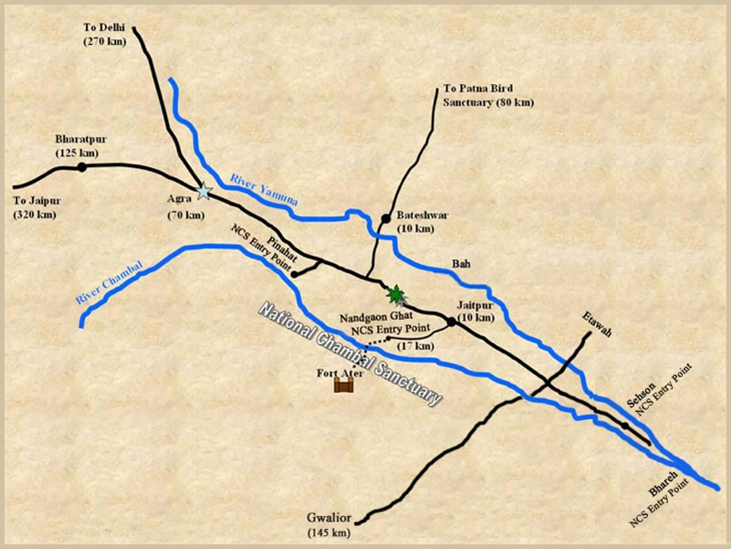
- Its ravines stretches over 2-6 km wide along the Chambal River near the tri-point of Rajasthan, Madhya Pradesh and Uttar Pradesh.
- The National Chambal Sanctuary is listed as an Important Bird Area (IBA)and is a proposed Ramsar Site.
- The Sanctuary is home to critically endangered Gharial (small crocodiles), the red-crowned roof turtle and the endangered Ganges River Dolphin and 320 resident and migrant birds.
- It provides economic support to the locals who directly depend on various resources of the Sanctuary.
- Theyfarm along the river, extract river water for irrigation, practice sustenance and commercial fishing, and quarry sand.
- Sand mining has been banned in the sanctuary since 2006.
Source:
- To end illegal mining, Madhya Pradesh plans to make it legal in parts of Chambal sanctuary
- National Chambal sanctuary
Image source:
UNSC 1267 Committee - Edukemy Current Affairs
- Context: India and the US have jointly proposed to a top LeT (Lashkar-e-Taiba) Militant,under the UN Security Council's Al-Qaeda and ISIL (Islamic State of Iraq and the Levant) Sanctions Committee which is also known as the UNSC 1267 Committee.
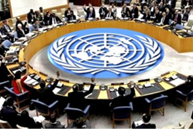
- The committee was first set up in 1999, and strengthened after the September, 2001 attacks.
- It is one of the most important and active UN subsidiary bodies working on efforts to combat terrorism, particularly in relation to Al Qaeda and the Islamic State
- It discusses UN efforts to limit the movement of terrorists, especially those related to travel bans, the freezing of assets and arms embargoes for terrorism.
- It is nowknown as the Da’esh and Al Qaeda Sanctions Committee.
- It comprises all permanent and non-permanent membersof the United Nations Security Council (UNSC).
- The 1267 list of terroristsis a global list, with a UNSC stamp.
Source:
- China blocks India-US move to designate Hafiz Saeed’s relative as terrorist
- China blocks India, US bid to designate Makki as terrorist: Report
Image source:
MPC-RBI Communication Gap Concerns: IE
Essence: Monetary Policy Committee (MPC) and Reserve Bank of India (RBI) plays the role of dual pillars in the inflation targeting framework. Clear communication between them and a single unambiguous communication from their side to the public is important. However, in recent years communication from MPC and RBI are at times divergent. As per the author, this divergence leads to potential loss of both clarity and credibility. Rift between what the MPC says and what the RBI does must be bridged for management of both inflation expectation and inflation.
Why should you read this article?
- To understand challenges being faced in monetary policy transmission because of lack of coordination between RBI and MPC.
Source:
A new global standard for AI ethics: The Hindu
Essence: As AI becomes all pervasive, it is possible to argue that AI-related technology can be prejudiced or discriminatory. The article stressed on the need to better regulate AI through some standard and universal principles. So, to regulate AI UNESCO came up with Recommendation on the Ethics of Artificial Intelligence. The recommendation urges member states to establish sufficient protections for handling sensitive data, maintain effective accountability, and provide redress procedures in the event of harm including its socio-cultural effects.
Why should you read this article?
- To understand the UNESCO worldwide accord on the ethics of AI and how it may benefit both the government and businesses.
- Acquire a thorough understanding of AI-related problems and potential solutions.
Source:
WEF’s Helping Hand - Edukemy Current Affairs
Background
- The world is experiencing a growing mental health crisis among young people, exasperated by the COVID-19 pandemic and a mounting global refugee
- With the aim of preventing mental health disorders in adolescents, World Economic Forum has developed the learning simulation "Helping Hand”.

About the Initiative
- The Helping Hand provides young people with accessible and engaging support to develop social and emotional skills.
- The solution combines evidence based, cognitive behavioral techniques with groundbreaking learning technology.
- The Helping Hand is designed as playable simulations that provide a safe environment to prepare for challenges in a series of life-like scenarios.
- The game-playing element is popular and suitable for young people and provides a familiar arena to work through issues, as well as facilitating dialogues about topics that typically are avoided, but important to address.
- The solution is also exceptionally scalable in that the content is universal, accessible on any mobile device, and can be distributed digitally at a minimal additional cost per user.
- It works great as a standalone solution and is great tool for teachers and psychosocial staff.
- The Helping Hand solution is tested and ready to be scaled to reach more young people.
Quote: “ If technology can create mental health problems, it can also remedy it”
Source:
Share the article
Get Latest Updates on Offers, Event dates, and free Mentorship sessions.

Get in touch with our Expert Academic Counsellors 👋
FAQs
UPSC Daily Current Affairs focuses on learning current events on a daily basis. An aspirant needs to study regular and updated information about current events, news, and relevant topics that are important for UPSC aspirants. It covers national and international affairs, government policies, socio-economic issues, science and technology advancements, and more.
UPSC Daily Current Affairs provides aspirants with a concise and comprehensive overview of the latest happenings and developments across various fields. It helps aspirants stay updated with current affairs and provides them with valuable insights and analysis, which are essential for answering questions in the UPSC examinations. It enhances their knowledge, analytical skills, and ability to connect current affairs with the UPSC syllabus.
UPSC Daily Current Affairs covers a wide range of topics, including politics, economics, science and technology, environment, social issues, governance, international relations, and more. It offers news summaries, in-depth analyses, editorials, opinion pieces, and relevant study materials. It also provides practice questions and quizzes to help aspirants test their understanding of current affairs.
Edukemy's UPSC Daily Current Affairs can be accessed through:
- UPSC Daily Current Affairs can be accessed through Current Affairs tab at the top of the Main Page of Edukemy.
- Edukemy Mobile app: The Daily Current Affairs can also be access through Edukemy Mobile App.
- Social media: Follow Edukemy’s official social media accounts or pages that provide UPSC Daily Current Affairs updates, including Facebook, Twitter, or Telegram channels.

